Growing Apple Bonsai from Seed
Hello. This is my first post, so please bear with me. I did my due dilligence and searched for posts that could cover my question, but couldn't locate any, so here goes:
About three months ago, I decided to grow some apple trees from seed. I got several sprouts, and one survived to become a little seedling. I'd like to turn it into a bonsai, and was wondering about special considerations for growing, potting, etc. I have it in a ceramic pot with drainage hole, and semi-packed soil. I keep it quite moist as it seems to like that. It sits in a west facing window.
I realize that there are a lot of variables involved in getting a flowering, fruit-bearing tree, so I'm less interested in that and more interested in things you can do to aid early growth, when to start pruning, when to repot, etc. As I mentioned, it is only about 14 weeks old, but I'm in this for the long haul!
I have several junipers, but this is my first deciduous, as well as my first time growing bonsai from seed.
Any help would be greatfully appreciated, as any sort of success with this one little tree will translate into many more attempts! (can you tell I'm already attached to it?)
Comments (19)
maj115
17 years agolast modified: 9 years agodoesnt seem like randy is much help... ok, lets see if i can do better. first the less important fact, if you want to produce fruit from this tree it will not be what you expect. apples do not grow true from seed.
second, if what you're doing is working then keep it up... i see no reason to change the way you treat a tree if it stays healthy. it will need the dormancy period to stay healthy but even that can be done indoors if you set it up right. for most people it doesnt even occur that this is possible but im sure that you can figure out a way to make this possible for your tree, and if all else fails you can move it outside until it has gone dormant and if the temperatures get to cold bring it inside.
as for potting, the purpose of potting a bonsai is to keep it semi root bound in an attempt to keep it small. treat it like any other bonsai when trimming back the roots. when to do it is a question i have no answer for. i would suggest that when it starts showing roots at the bottom and is firm in the pot that you check to see if it is root bound and go from there.
fertalizer is a dangerous thing to bonsai. it is good in that as with all plants it helps growth, but it is bad in that too much will poison your plant. i would suggest watering it with a 1/8th or 1/16th strength every week and not fertalizing it at all while dormant.
pruning should be done to shape the plant into a athetically pleasing (to you) shape. this can be done in any way but i would suggest pinching off the nubs as they appear if you do not want there to be a branch. the time to do this would probably be in the "spring" period after dormancy when there is the most growth.i am not an expert on plants that need a dormancy period but i wish you all the best luck.!! btw im trying to grow bonsai from seed and was told to just go out and buy one. ik have found through my own inquiries that there can be real jerks out there that try and make you give up (r*cough*). i hope you show them wrong and i hope to follow in your footsteps.
Related Professionals
Folsom Landscape Architects & Landscape Designers · Lakewood Landscape Architects & Landscape Designers · Manchester Landscape Contractors · Cordele Landscape Contractors · Florham Park Landscape Contractors · Framingham Landscape Contractors · Leicester Landscape Contractors · Oak Forest Landscape Contractors · Peachtree City Landscape Contractors · Adrian Decks, Patios & Outdoor Enclosures · Philadelphia Decks, Patios & Outdoor Enclosures · Provo Decks, Patios & Outdoor Enclosures · Redlands Decks, Patios & Outdoor Enclosures · Tomball Decks, Patios & Outdoor Enclosures · Wheaton Decks, Patios & Outdoor Enclosureslucy
17 years agolast modified: 9 years agoMaj - I don't know where you live, and as you say you're not an expert on dormancy, but apple trees will not survive indoors. There is no way to 'set it up right' that he can 'figure out'! There's no way to 'bring cold inside" that would be cold enough for them (and still even remotely comfortable for you) plus other factors are important besides just the temperature. And you prune roots of indoor (tropical) trees anytime, outdoor (hardy) trees only in late fall or late winter.
rjj1
17 years agolast modified: 9 years agoDear maj115
(r*cough*) What does that mean?
Innuendos from someone hiding behind some vague anonymous handle I find amusing :-). If you believe I'm a jerk, say so. If you want to debate the accuracy of information given, let's go.
I offered good sound advice. Unless those plants are treated properly, all the other stuff is irrelevant. This is not rocket science. Temperate trees are not houseplants. If they were, you could find them sold that way everywhere". Only newbies in bonsai and crap mallsai shops cling to that belief.
Once he understands these plants need to be outside and moves them, then maybe other things can be shared on how to succeed at what he's doing.
Can a juniper or apple "survive" indoors? I think I could do it, but why bother? An apple or juniper grown properly outdoors will put on healthy sustainable growth that is a benefit to the plant. Indoors, what little growth there may be will be weak undesirable in the long run, if there is long run.
Fertilizer is a dangerous thing to bonsai? Anything misused is dangerous.I have many plants that are fed full strength. These are young seedlings and cuttings that need to bulk up for a few years before they start getting trained.
Older more established plants probably don't need the nutrition that seedlings do. 1/2 or 1/4 strength is probably good advice.
Be careful what advice you offer. Others failures are on your hands.
The jerk:-)
gnome_in_pa
17 years agolast modified: 9 years agoMaj115,
Fertilizer, properly used, is not dangerous to your plants, in fact it is necessary especially considering the free draining mix that most of us use. I have been fertilizing with 20-20-20 mixed full strength every 10 days or so all summer and I have seen better growth this year than in summers past when I have been more conservative.
Young material needs to GROW not be held in check, nor should it be root pruned in order to restrict growth as this is counterproductive. Nascent branches should be allowed to remain in order to fuel development of the trunk, both girth and taper.
The conditions necessary to induce dormancy are very difficult to simulate in our homes and to encourage a beginner in this endeavor is irresponsible.
There is nothing wrong with growing seedlings as longs as you are realistic in your goals. It will take years before anything resembling bonsai can be achieved. As has been said many times before, "small bonsai dont become large bonsai".
Adonirim,
One thing I have found when growing seedlings is that it is best to start with more than you think you will need. Not all will germinate, some will do better than others, mishaps will befall some, etc, etc. I currently have over 100 seedlings of four species, all outside. It would not be possible, even if it were advisable, for me to grow this may plants in my home.
You donÂt give your location or state if it is possible for you to grow outdoors, but if you really want to try this I suggest that you search your neighborhood for Crab Apples and collect as many fruits as you can find and start in earnest next spring. Better yet buy an established plant and cut years off the whole process, you can still do the seedlings too. Here is a link with some excellent information, also consider purchasing some material from this establishment, these are good people.
Norm
panthrina_hotmail_com
17 years agolast modified: 9 years agoAdoniram-
Don't take Maj115's advice, he doesn't know what he is talking about. Especially when it comes to Bonsai. What zone are you in? I can tell you that your Malus requires a life outdoors. It will die within a few years if you keep it inside. This is one of the hard facts of sharing a life with a temperate tree. The same thing goes for your junipers. They might live 5 or 6 years inside but they will eventually die from lack of 'sleep', basically wearing themselves out with too much growth if proper dormancy is never reached. As for repoting and root maintenance, I give you the advice of John Yoshio Naka-san, probably the undisputed master and maybe even father of American Bonsai. He says to repot/change soil every year in February, March, or April, May and June but only after defoliating the tree (removing all the leaves but leaving the petiole[leaf stem], or in October. As for pruning the roots you can do this every time you repot (except for May or June repotting) but October would be the preferred month because Malus is a fruiting/flowering tree. As your tree is very young, I would suggest planting it in the ground or a in a very large pot for at least 5 years to thicken up the trunk and give it a decently hard pruning every winter to aid in a compact growth habit. I like to constantly feed my Bonsai by using a 1/4 dose liquid food (usually 10/10/10 Miracle Grow or by using either Fujiyama brand Organo-Gro pellets or Bio-Gold cakes. These last two would probably be your best bet as you have a fruiting tree and the organic plant foods have a much more balanced 'diet'. Chemical foods such as Miracle Grow only contain N-P-K and need 'boosting' from the addition of vitamins, minerals and hormones. I usually add a bit of cottonseed and fish meal to by potting soil if I intend to use a chemical food. As for your attachment to your new baby, I can definiely attest to that. This year is my first attempt at starting Ponderosa Pine from seed and I'm very attached to all my little seedlings. I can't wait until next year when I can get them in the ground and growing strong to develop their trunks and such. I hope you all the best!!
Maj115
Randy's information was 100% more accurate than yours. A temperate tree will die if left indoors for too long. This is a fact and if you'd like to argue this fact with me, you may try but you will fail. EVERY expert on Bonsai will tell you that a temperate tree REQUIRES an outdoor exsistance, there are no if ands or buts about it. In needs the seasonal variation, not just changing from hot to cold, or wet to dry (these are closer sub-tropical and tropical conditions), the require everything that is gains from living outside in a temperate zone. This includes the changes in day light, the angle of the sun, the variations in humidity and the fresh, unstifled air. Any temperate tree not allowed to live in such an environment will eventually die. There is no way around this as you may be suggesting.
Also contrary to what you say, Bonsai are in pots to make them easy to work with, nothing more. The actually 'stunting' of a specimen is done through a combination of good root pruning practises, routine trimming and pruning of the branches and a good feeding program. Even when growing a plant intended for Bonsai in open ground, you still dig it up and prune its roots occasionally as well as doing preliminary trimming and pruning of the branches.
Also contrary to your advice, Bonsai need a good feeding program due to the fact that they are NOT grown in 'normal' soil. Bonsai soil is very coarse and contains only small amounts of nutrients itself. The Bonsai gets most of its nutrients from the actions of its caretaker. This means being a responzible plant owner and doing research on every species you keep, making sure to look for good, correct information especially when working in a 'specialized' horticultural field such as Bonsai.
As for starting bonsai from seed? This is probably the single best way to create bonsai though it is also the longest and most dedicated way of propogation as well. A Bonsai student can control every aspect of the way a seedling grows and thusly will greatly affect the end result. This is especially true if the Bonsai student is diligent, patient and willing to put in the time required. Proper horticultural knowledge is also key. Then there is the pride and joy one feels creating a wonderful work of art from such humble beginnings. These factors, especially the time/patience involved and the fact that horticultural knowledge and experience are needed tends to keep people away from attempting Bonsai work in such a fasion. In all reality, Bonsai from seed is the most dedicated, purest form of Bonsai.
Pinus aristata
bonsai_audge
17 years agolast modified: 9 years agoAlthough I partially agree with Maj115 that if it works for you, then keep on doing it (i.e. if it ain't broke, don't fix it), you have to realize that there is something that will work for only a few years and there are things that will work for a great while longer. The case of an outdoor tree being inside is a perfect example.
P. aristata has explained it well enough, so I won't even go into the specific subject. However, I will tell you that it will be of great benefit to you, and thus to the forum (it's good if people succeed in bonsai!), if you well educate yourself in bonsai. When learning a practice, you often delve into the history and learn what has been done before, BEFORE going out and forging your own, unique path.
Your best defense against misinformation, as I mentioned above, is to try to learn as much about bonsai as possible. There are many good books out there, I would suggest that you try reading first before going out onto the internet to find out more. I am not discounting the quality of material on the internet, but the sheer amount of it is often overwhelming.
I believe that there are some good threads on the topic of bonsai books in this forum. Try the Search feature (which can be very helpful!) to locate a few of them. Also, don't head off to Amazon.com to buy all of them right away - see if your local library has a few and start off with those.
Personally, I dislike working with seed. My own preference is with stock that's already been germinated. However, others love the absolute control and the satisfaction that can only be given by starting from the very beginning.
-Audric
mganga_mulapali
17 years agolast modified: 9 years agoI grow a lot of plant material from seed, but wonder why one would plant apple tree seed rather than crab apple.
If and when it bears fruit, it will be in proportion to the tree size.
Peace,
mganga_mulapaliadoniram
Original Author17 years agolast modified: 9 years agoThank you all kindly for your information. I have since built a window frame for my tree to expose it to the elements. I don't have my zone setup with my account because I split my time between two states; NYC and Massachusetts. Sorry for any ambiguity. The trees are in MA. I live in an area that tends to get quite cold (northern worcester county). My junipers are outdoor bonsai, and out of experience... my first trees were indeed "mallsai" and I killed them quite effectively. Since them, I have become slightly more adept at tree care. I adjust my feeding in accordance with seasons. As I mentioned, this is my first deciduous attempt (from seed) that has ever resulted in anything. I have been trying very hard to take the best possible care of my tree, but I am seriously unfamiliar with the care of deciduous bonsai.
Randy - Thanks again for your straight-forward suggestions. Fortunately (as I mentioned) I'm no longer executing my bonsai on a regular basis. heh.
Pinus - I appreciate your lengthy response. I am hoping you can explicate a bit more on it; as my tree is very young, would you reccommend defoliating the tree at this point, and repotting in the spring? I am concerned about inflicting the trauma of repotting at this point, even in six months. Maybe you can shed some light on this. My books suggest feeding through leaf drop, so I am perplexed about what to do with your suggestion; should I remove leaves to the petiole now and stop feeding, or wait for the tree to do as it will and follow its natural cycle?
Audric et al-
I completely understand the "go read a book" suggestions, and noted that they make up a large volume of responses on this site! I have several books on bonsai, but they all seem least informative on young, deciduous bonsai, and quick bleak on the subject of growing the same from seed. If you have a specific recommendation (or can link an appropriate thread) I will certainly heed it. In my profession, we find many of the same situations: beginners asking questions that could easily be found in any decent book. I haven't had much luck with this specific area, so I appreciate the patience.
Again, thank you for the help.
Best wishes,
Adoniram
adoniram
Original Author17 years agolast modified: 9 years agoLet me just amend my last post; thanks to Norm for the link that gives a bit more information.
Adoniram
lucy
17 years agolast modified: 9 years agoDo not defoliate now - it'll happen naturally anyway as it does with deciduous trees, but by doing it yourself, it will be 'stimulated' to grow new leaves now, rather than more appropriately in late spring/early summer, and then will die because leaves can't withstand the frost, etc. You can repot (and/or prune branches) in either late fall or late winter - when the tree is dormant and therefore not subject to any stress.
panthrina_hotmail_com
17 years agolast modified: 9 years agoAdoniram-
Lucy is right, do not defoliate now. Defoliation is done in the early to mid-summer. Don't repot your tree unless it needs to be repotted. As for feeding, just use any balanced plant food for now (10-10-10). Your apple tree will probably need to be about 15 years old before it starts flowering and producing fruit. When this happens, it is a good idea to use a feed that is high in Phosphorus (the middle number). This will promote flowering and fruiting.
Hope this helps a bit
P. aristatagnome_in_pa
17 years agolast modified: 9 years agoAdoniram,
As has been noted defoliation is not performed this time of year but something that has not been mentioned is that defoliation is not really an appropriate technique for such young material.
Much deciduous material is developed in two distinct phases, trunk development and only later branch development. While growing out your trunk defoliation will only slow the process.
I sympathize with your problem regarding incomplete or contradictory information in bonsai texts, (a good reason to read as many diverse authors as you can). A similar example that seems relevant to note at this time is that of pinching. Many books describe pinching back to two leaves. The same issue applies, there is little sense in pinching, or defoliating, branches that will not be part of your final design, in fact it is counterproductive to early trunk development.Norm
adoniram
Original Author17 years agolast modified: 9 years agoThanks again to everyone, I really appreciate the responses. I will certainly stick around here at gardenweb, it's wonderful to find that such a forum exists.
Cheers.
Adoniram
baci
17 years agolast modified: 9 years agoIf it were me I would start from seed. If you graft, then you need a rootstock to graft onto & then you have to trim the root system of that rootstock. Some growers graft onto rootstocks started from seed.
If growing indoors, consider a low chill variety.
I have been growing a couple of apples from seed in a sheltered location for the last 5 years. The lowest temp they were exposed to was about 50, and that was for a very short time. I encourage you to try & would like to see your results.applenut_gw
17 years agolast modified: 9 years agoAdoniram:
If you want a small apple tree you can keep in a pot indoors and gives good apples, order a William's Pride tree on M27 rootstock from a mail-order nursery. You can easily maintain it 2-3 feet tall. It will bear fruit the second year regardless of chilling.
I own an apple nursery in Southern California, USDA zone 10a, and can assure you that the chilling hours assumption for apples is wrong (but appears to be correct for stone fruits). Many apples fruit just fine here with a complete lack of dormancy where they never drop their leaves, the new leaves just push out the old. Pink Lady is a good example, which will also blossom all year long (the last ones were at Thanksgiving.
Apples need 6 hours a day of direct sunlignt if you expect them to fruit. Do not fertilize, as they require low nitrogen. My father also grows apples in Chapala, Mexico where it never falls much below 60 degrees and so you can leave it inside during the winter. With an M27 rootstock a 5-gallon pot would work fine and control the size by letting it get rootbound. Train the branches to be horizontal to trigger the hormonal conditions necessary to compensate for lack of cold and make it fruit. You will need to support the branches bearing apples with sticks.{{gwi:17346}}
In the photo above notice the palm trees in the background of this Fuji apple that ripens at Christmas here. Apples are extremely adaptable and seem to enjoy making liars out of "experts" that tell you they won't grow somewhere. You could grow an indoor potted apple from seed, but you'll be fighting it the whole time (it wants to be a 30' tree) and get inferior apples.
Applenutemlida
16 years agolast modified: 9 years agoHave any of you who have started apple seedlings encountered a white powdery fungus or mold on the leaves. I have a couple of 3-inch seedlings that have dark green leaves, look real healthy. However, one has developed a dime-sized circle of mold on a couple of leaves. I've been watering with water from my fish tank. Could it be ich? How do a treat the plants at this point? -emlida
Shielah Andersen
6 years agoOK...so I have an apple tree that i started from seed. I had tried unsuccessfully to germinate apple seeds in the past, but one day i opened an apple from Weston Heirloom Orchard and found a seed already sprouting. I quickly potted it in some growth medium until it was big enough to go into an actual pot. (around 3-4" high with 4 leaves). I kept the growth medium intact when moving it to reduce shock. I put old peach pit shells in the bottom of a 6" pot with hole for drainage. I used a mix of fruit and vegetable plant mix for containers and a handful of fishtank gravel for fill and carefully nestled the baby in.
I live in Wisconsin. I put my plants outside in the spring after risk of frost and bring them in again in fall before it hits.(usually haha) My apple tree is 3 years old now. I keep it in the same pot so as not to risk fate. I look on this as a special plant. I occasionally give it a small drink of hard or plain cider to represent the nutrients that fallen fruit gives back to the plant that made it. I do this in the fall when cider is fresh and plentiful:) ( the science may be sketchy here but it's really more of a symbolic meditation sort of thing) It has begun to form somewhat twisted and enlarged exposed bonsai-like roots and lower trunk on its own, but has 4 smaller branches(6-8") and one long tall main shoot (2 ft. high/fat pencil sized diameter at widest) that would be the main trunk on a tree outside. So the whole "you can't grow an apple tree inside" is false.
However, I will say that it has yet to put forth flower buds and so no fruit. It sits in a warm area of my house and has nice leaves etc. Maybe I will try giving it a little cold snap....but I really don't want to kill it so maybe I will just let it grow as it wants in the environment it lives in and not try to screw with it too much...which is sort of the anti-bonsai:)
I say...grow any seed you find...especially if it is already sprouted;)tapla (mid-Michigan, USDA z5b-6a)
6 years agolast modified: 6 years agoI read through this thread and am actually amazed by the amount of misinformation it contains. I'm not sure if that is related to how far we've come in the art and science of bonsai since 2006 and the posts reflected beliefs that were popular 12 years ago, but I'll hope that's why much of the info is so 'off'.
***********************************************************************************
Shielah - Apple embryos (seeds) are almost always dormant at the time of harvest. Several weeks at 32- 40*F (0-4*C) is necessary to release the seed from dormancy so it can germinate. To grow normally, apple trees NEED 500-1100 chill units that only accumulate at temps between 33-45*. If they do not go through a normal dormancy and do not get the number of chill units to properly release the tree from it's dormant state.
Chill units were formerly called chill hours, but it was discovered that not all temperatures contribute equally to the chilling required to release a plant from dormancy. The second number is the number of chill units that accumulate on a per hour bases at the temp or temp range preceding
Degrees Fahrenheit:
<34.5* = 0.0 c.u
34.7* – 36.3* = 0.5 c.u.
36.5* – 48.4* = 0.1 c.u
48.6* – 53.8* = 0.5 c.u.
54.5* – 60.6* = 0.0 c.u.
60.8* – 64.4* = -0.5 c.u.
>64.4 = -1.0 c.u.
Degrees Centigrade
<1.4* = 0.0 c.u.
1.5* – 2.4* = 0.5 c.u.
2.5* – 9.1* = 1.0 c.u.
9.2* – 12.1* = 0.5 c.u.
12.5* – 15.9* = 0.0 c.u.
16.0* – 18.0* = -0.5 c.u.
>18.0* = -1.0 c.u.
A classic symptom of insufficient chilling is delayed bud-break and a lazy spring flush of growth. Also, a tree might have a small tuft of leaves near the tips of the stems and be devoid of leaves for many inches proximal to branch apices (below the growing branch tips). Lower buds will break eventually but full foliation is significantly delayed, production of reproductive parts (blooms fruits/ nuts/ seeds, …..) is reduced, and the tree is weakened. Additionally, not meeting chill requirements contributes to heavy suckering or water shoots emerging from lower parts of the tree, which can be a problem, obviously. Also normal development of next year's buds can be impaired.
The age of a tree is measured ontologically as well as chronologically. Cuttings from a tree that is capable of blooming are, at the moment they are taken, already ontologically much older than your tree from seed - even with no roots yet having grown. Trees from seed can take many years (up to 25 for hawthorn) to reach sexual maturity/ bloom / bear fruit, while cuttings from a tree capable of blooming have already attained the sexually mature stage.
Your tree, so do as you wish, but the tree would, w/o question, demonstrate its appreciation for a cold winter rest and a nutritional supplementation program that relied heavily on an appropriate fertilizer in lieu of the apple cider thing. That you can manage to keep the tree alive w/o it's cold rest shouldn't be viewed by others as a clarion call to follow the same path.
Al
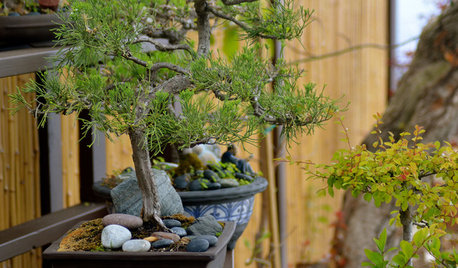
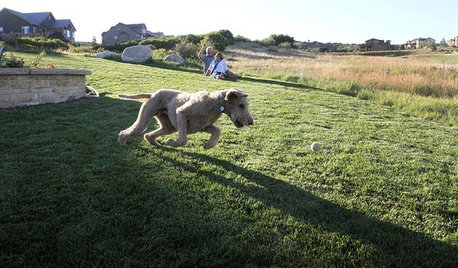

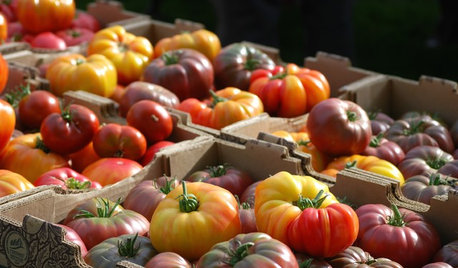
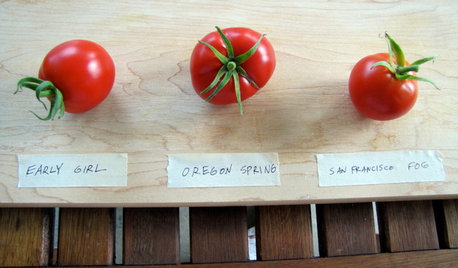



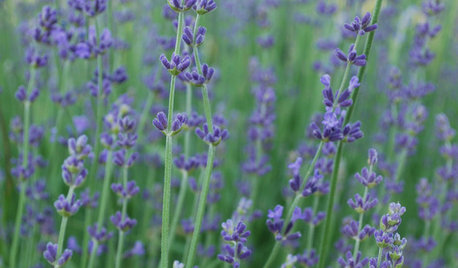









rjj1